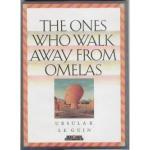
|
| Name: _________________________ | Period: ___________________ |
This test consists of 15 multiple choice questions and 5 short answer questions.
Multiple Choice Questions
1. The floor of the scapegoat's dwelling is said to be what "to the touch" (8)?
(a) Cold.
(b) Hot.
(c) Damp.
(d) Sticky.
2. If the scapegoat child were to be rescued, what elements of Omelas's society would be destroyed?
(a) Few.
(b) All.
(c) Many.
(d) Some.
3. The young men and women stroke what parts of their horses during the festival?
(a) Necks.
(b) Muzzles.
(c) Flanks.
(d) Manes.
4. The floor of the scapegoat child's dwelling is made of what material?
(a) Linoleum.
(b) Wood.
(c) Stone.
(d) Dirt.
5. How many paces long is the dwelling of the scapegoat child?
(a) 3.
(b) 5.
(c) 12.
(d) 4.
6. The scapegoat child is afraid of which objects within its dwelling?
(a) The mops.
(b) The spiders.
(c) The buckets.
(d) The water and food bowls.
7. What smell at the festival is described as "marvelous" (4)?
(a) Flowers.
(b) Roasting meat.
(c) Cooking.
(d) The sea.
8. How old is the child who plays one particular instrument in Omela?
(a) 8 or 9.
(b) 9 or 10.
(c) 6 or 7.
(d) 11 or 12.
9. How old does the scapegoat child of Omelas appear to be, according to Paragraph 8?
(a) 4.
(b) 10.
(c) 8.
(d) 6.
10. Of what material is the child's instrument made?
(a) Bone.
(b) Animal skin.
(c) Wood.
(d) Linen.
11. The people who see the scapegoat child do NOT feel what emotion?
(a) Self-loathing.
(b) Outrage.
(c) Anger.
(d) Impotence.
12. The sound of the instrument played immediately after the child's performance emerges from what location?
(a) The square.
(b) The mountains.
(c) The pavilion.
(d) The sea.
13. The children of Omelas learn about the scapegoat child when they are between what ages?
(a) 9 and 14.
(b) 8 and 12.
(c) 6 and 8.
(d) 13 and 15.
14. Of the 4 phrases contained within Paragraph 4, how many of the phrases are questions?
(a) 4.
(b) 2.
(c) 1.
(d) 3.
15. How many locked doors does the scapegoat's dwelling have?
(a) 4.
(b) 3.
(c) 2.
(d) 1.
Short Answer Questions
1. How many of the same frightening objects are usually present within the scapegoat child's dwelling?
2. Toward what location do the processions move during the festival celebrations?
3. The sound of what instrument is heard at the festival just when the child stops playing his own instrument?
4. The scapegoat child is said to recall the sound of whose voice?
5. How many paces wide is the dwelling of the scapegoat child?
|
This section contains 338 words (approx. 2 pages at 300 words per page) |

|




